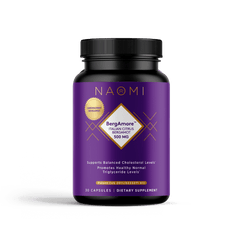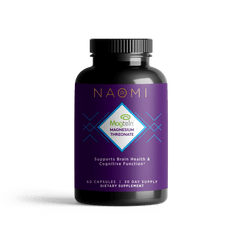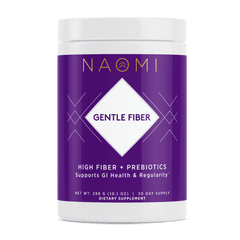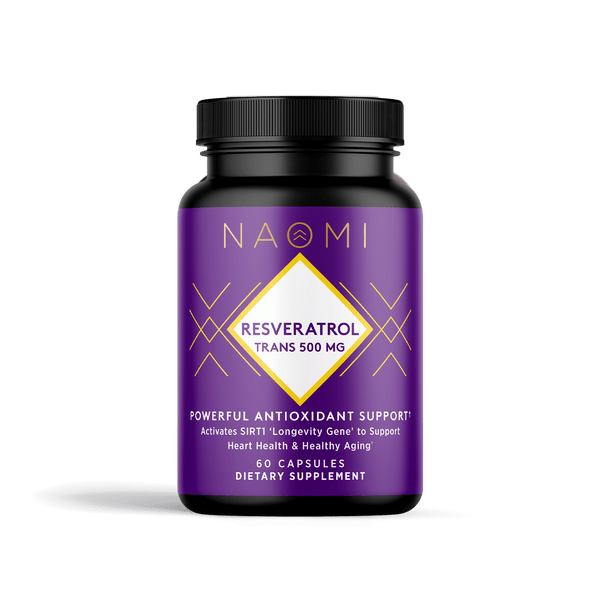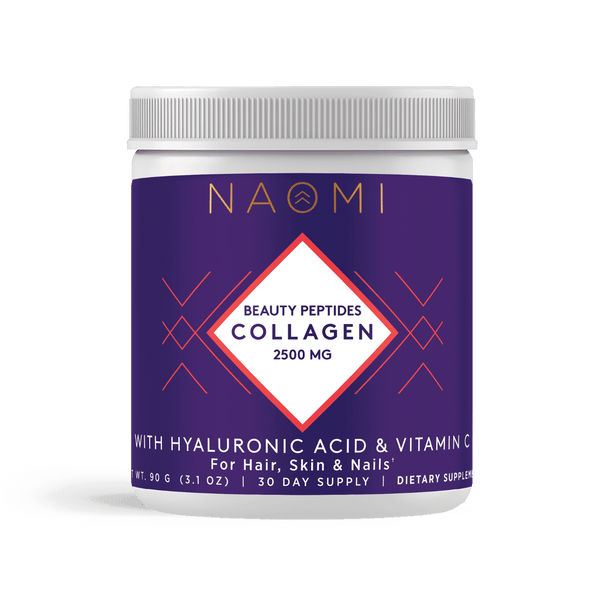The Keto Diet: What It Is, How It Works, and If It’s Right For You!
What is a keto diet?
What are the benefits—the keto diet advantages and disadvantages?
What food can I eat on keto?
Is a keto diet healthy?
How much and what type of fiber should I be eating on a keto diet?
These are some of the most common questions I receive about the keto diet, so, in this article, we’re going back to the basics and discussing all things keto—everything from how to start doing a keto diet (or the keto diet for beginners) to my personally recommended keto diet plan specifically for women!
So, if you’ve been debating whether or not to try a keto diet and if you’re not quite sure if it’s for you, this is one article you don’t want to miss! Keep reading to get the real inside scoop on all things related to the keto diet.
What Is a Keto Diet?
Originally developed in the 1920s as a therapeutic diet for children with epilepsy, the ketogenic diet, or keto diet, is a high fat, moderate protein, very low carb diet that causes your metabolism to shift from using carbs (sugar) for fuel to using fat for fuel. And this fat includes both the fats you eat and even dreaded excess body fat, such as the dangerous belly fat that’s linked to so many modern-day illnesses!
The keto diet works by lowering blood sugar and insulin levels so that the insulin signaling can be restored. Because of the low levels of carbohydrate in the diet, along with the high levels of nutrient-dense fats, your body begins to use fat for fuel in the form of ketones. Simply put, ketones are fuel molecules your body makes out of fat. They’re not only helpful and more efficient than relying on glucose, but they are known to be anti-inflammatory as well—a direct contrast to inflammatory glucose!
Now, in order for your body to create ketones and become a fat burner, it must first enter into the metabolic state of ketosis. So, let’s take a closer look at what that is and how you accomplish getting into ketosis in the first place.
Getting Into Ketosis
It wasn’t easy for me to get into ketosis when I first started experimenting with a keto diet a few years ago. It took some time—more time than I expected, to be honest—and I had to be fairly diligent with eating enough fat, while going low enough in carbs. But I also had to be careful to not cut carbs so much that I missed out on all of the benefits of fiber.
Now, it’s worth mentioning that I recommend utilizing intermittent fasting help get into the state of ketosis. The reason is simply because this type of fasting is known to support your body’s ability to produce ketones. Once I found the right balance and finally hit my sweet spot with my diet and intermittent fasting schedule, my body naturally used ketones with ease.
Although the most definitive way to know if you are in ketosis is by testing blood ketone levels, your body will give other clues—if you know what to look for.
Signs of Ketosis
So, how do you know if you are in ketosis? Here are some common signs that may suggest that you have reached a state ketosis:
- You can go at least four to five hours between meals without feeling shaky, lightheaded, or weak.
- You don’t have “keto flu” symptoms such as headaches, fatigue, nausea, or irritability.
- Your energy levels are consistent and steady throughout the day.
- You can comfortably complete fasted workouts.
- You notice a decrease in overall hunger and cravings.
- You notice an increase in energy and mental focus.
If you can check these boxes, you are likely in ketosis. That said, I recommend checking your blood ketones to confirm that your physical symptoms do, indeed, correlate with the ketogenic state.
Signs That You Are Not In Ketosis
On the other hand, if you are following a keto diet and aren’t experiencing the changes above, you may not have reached the state of ketosis yet.
Here are some signs that you are not in ketosis:
- You experience increased or continued cravings, especially for sugar and/or carbs.
- You're often hungry.
- Your energy is low or unstable.
- Your blood sugar crashes between meals, possibly causing you to feel shaky, lightheaded, or weak.
- You experience symptoms of the “keto flu,” including fatigue, headaches, nausea, or irritability. (Note: Keto flu symptoms can mean that you need more electrolytes.)
- When you test your blood ketones, they are less than 0.5 mmol/L.
Now, it can, and often does, take time to transition into a ketogenic state. The body undergoes a huge metabolic transition when it shifts from using carbohydrates from food for fuel to using fat (including your own body fat) as the primary source. So, if you’ve only been following a keto diet for a few days or weeks, know that you may need more time.
Although some people can get into ketosis in a matter of a couple of weeks, I’ve found that for some it can take longer than expected, and up to three to six weeks is not uncommon.
That said, if you’re doing everything right and still believe your body is having trouble switching over into fat-burning mode, or entering ketosis, check this list of reasons why you’re not in ketosis for extra support and guidance.
Top 6 Health Benefits of the Keto Diet
Once you’ve reached the state of ketosis, your body has the ability to decrease insulin resistance and increase metabolic flexibility to the point that it is a helpful diet for a variety of factors and conditions.
In addition to increased energy, sharper focus and memory, improved exercise performance, and more, here are some of the top benefits of following the keto diet.
1. Supports healthy weight management
Many women with whom I’ve spoken over the years are interested in using a keto diet plan with intermittent fasting for weight loss. In fact, numerous studies have shown that following a ketogenic diet can result in greater weight loss than following a low-fat diet—so much so that researchers have identified the keto diet as a great tool for fighting obesity.
In addition to burning your own stored body fat by entering the metabolic state of ketosis, intermittent fasting also aids healthy weight management in the following ways:
- Allows the body to use stored macronutrients for fuel.
- Allows the body to make ketones.
- Increases autophagy (cellular repair) and cellular efficiency.
- Decreases insulin levels and supports healthy blood sugar levels.
- Supports hormone balance and circadian rhythm.
- Increases awareness around meal timing (often reduces snacking or mindless eating).
2. May fight certain cancers
There has been some very promising research featuring human trials on cancer patients who followed a ketogenic diet as adjuvant therapy. The results have ranged from improving both body weight and composition to reduction in markers for tumor progression.
Research is ongoing at this time, but many scientists have supported the idea of treating the keto diet as complementary therapy to standard chemotherapeutic and radiotherapeutic options to help improve tumor response. Their rationale behind the diet’s effectiveness is that because it lowers sugar uptake, it could potentially lead to cancer cell starvation as well as support energy production in non-cancerous cells.
3. Supports whole-body metabolism
Historically, there has been some fear surrounding fats, but not all fat is created equally—and eating the healthy fats that make up the keto diet is known to support metabolism.
Here’s why: The very best fats, MCTs (or medium-chain triglycerides) are unique fats that aren’t stored by your body but instead used as a fuel source. As a result, MCTs are known to help increase energy and support metabolic function throughout your body.
For more on ways to support your metabolism, make sure to read my article on the top metabolism boosters for whole-body health.
4. Helps fight neurodegenerative disorders
As you may recall, the ketogenic diet was originally created as a treatment for epilepsy and, as a result, quite a bit of research has been conducted on its effects on brain health. Given this, it’s not surprising to learn that the keto diet has been extensively studied for its effect on neurological disorders, such as Alzheimer’s, Parkinson’s, and even sleep disorders.
Research has found that ketones can cross the blood-brain barrier to serve as a cleaner fuel source for the brain, in comparison to glucose. Additionally, other incredible research has shown that following a keto diet can provide the body with the necessary nutritional and metabolic tools to create a balance between glutamate and GABA, leading to calmer physiological milieu in an over-excited environment.
As a result, researchers have surmised that this is the reason why keto may be helpful not only for neurological conditions such as Parkinson’s, Alzheimer’s, seizures, and more but also for an overall reduction in brain fog and anxiety, improved memory and focus, stress support, and better mood.
5. Supports healthy blood sugar levels
The keto diet has also shown promise for those fighting elevated blood sugar levels, especially when combined with intermittent fasting. Research has shown that both support metabolic health by supporting healthy blood sugar levels, improving insulin sensitivity, and supporting healthy blood pressure levels.
Specifically, some studies have determined that one of the most significant effects of following a ketogenic diet is that it can noticeably improve HbA1c levels, going as far as recommending the keto diet as an adjunctive treatment for type two diabetes!
6. Supports satiety and reduces cravings
Eating a diet high in healthy fats, such as the keto diet, can help to reduce cravings for processed junk foods. And since the average person gets approximately 25 percent of their daily calories from snacking, this is a big deal!
Here’s how it works: When you eat a keto diet, you have a much different chemical response: insulin is lowered, blood sugar is lowered, and satiety hormones increase. Additionally, if we look at MCTs as an example, studies have shown that consuming a healthy fat source such as MCT oil in the morning results in eating less food during lunch.
The reason why? MCT may trigger the release of satiety signals and hormones, such as leptin, that help promote the feeling of fullness.
Remember, fat is a much more efficient fuel source than glucose, and a well-executed keto diet can leave you feeling energetic without the constant need to snack or extreme hunger pangs.
Types of Keto Diets
Now, before we go any further, I want to briefly outline a few of the two different types of keto diets so you can best choose the right plan for you. As I present these options, keep in mind that there is no one way to “go keto.” You can switch around as needed or incorporate elements from each—as long as you’re getting the results you desire.
Keto and Intermittent Fasting
There’s one truth I want to share right away: Intermittent fasting isn’t a diet; it’s a practice. It complements the keto diet rather nicely, but truly can be incorporated into any diet philosophy, making it a helpful step as you work on implementing a keto diet, modified keto diet, or any other whole-food lifestyle approach.
Now, in terms of how it actually works, the 16:8 protocol is the most common schedule for intermittent fasting, meaning you spend 16 hours fasting and eight hours eating a high fat, moderate protein, low carb diet. That said, other protocols work as well.
Some people start slowly with 12:12 or 14:10 while others find they feel best with a longer fast such as 18:6. Some may even choose one meal per day approach and then fast for the 23 hours before their next meal. Just note that when restricting food to just one meal, or even two, it takes some careful consideration to make sure you are getting enough food and enough nutrients, especially if these restrictions are happening daily.
Although some will intermittent fast daily, others, especially women looking to support healthy weight management, may find that alternate day fasting provides just enough benefit without being too stressful on the body, thus creating an environment that is more conducive to weight loss in some cases.
With so many options, there are many ways you can incorporate intermittent fasting into your weight loss strategy. When it doesn’t seem to work anymore, you can mix it up and give your body a new rhythm to adapt to.
Keep in mind that less is sometimes more. If you desire more weight loss or weight loss has slowed, you might be tempted to fast more and more, but that extra restriction may not always produce the desired results. It is about finding your sweet spot with fasting, where you look and feel your best and where your body naturally moves to your optimal weight.
High Fiber Keto
One challenge of a typical keto diet is making sure you get enough fiber, which is an indigestible carbohydrate, while still staying low enough in carbs to support ketosis. Eating high-fiber foods in conjunction with following a keto diet provides the benefits of fiber along with the benefits of keto, which is the best combination for metabolic support because it helps to boost your metabolic rate.
High fiber keto is my version of the keto diet that was developed over several years of personal experimentation, working with women through my coaching programs, and hundreds of hours interviewing experts about the microbiome, high-fat diets, and specifically how the keto diet can support women.
High fiber keto is not the average keto diet that simply tells you to avoid higher carb foods. Instead, it focuses on food quality in which you eat an abundance of good fats, high-quality proteins, and high fiber plant foods such as asparagus, artichoke, collard greens, onions, garlic, Jerusalem artichoke, broccoli, cauliflower, burdock root, chicory root, and zucchini.
Although high fiber keto is where I always recommend women start with their keto journey, it is important to keep in mind that while there are some commonalities among women, every woman is unique. After you have the basics under your belt and have begun to adopt keto-specific daily habits, you can begin to experiment with other diet plans that work best for you, your life, and your individual health goals.
To learn more about the high fiber keto diet and to get my customizable 22-day plan, make sure to check out my book, High Fiber Keto.
Keto Cycling
In some cases, when a woman doesn’t see a hormonal improvement from high fiber keto, I suggest digging deeper into these areas. If you are under a lot of stress (or recovering from a particularly stressful time) or you have underlying hypothyroidism, a keto diet may need to be modified, at least to start. One way to do this is through keto cycling.
Keto cycling is following a ketogenic diet, but involves cycling in and out of eating whole food carbohydrates such as sweet potatoes, rice, lentils, and fruit. This allows the body to benefit from the keto diet without putting too much stress on a sensitive system.
My favorite way to keto cycle is by following my Fat First, Carbs Last rule. This rule requires you to eat a high fiber keto breakfast and lunch (or just lunch if you are intermittent fasting that day) and then having a portion of whole carbs with your dinner meal. You might do this daily, a couple of times weekly, or even monthly in accordance with your menstrual cycle, as using the keto diet for a woman’s hormone balance can be an incredible tool for those struggling with symptoms of sex hormone imbalance, such as PMS, irregular menstrual cycles, and low libido.
High Fiber Keto Diet Foods
People often wonder one major thing in regards to starting a keto diet: What to eat! With all of the focus on the low carb, high-fat aspects of keto, I’ve found it essential for keto success to also make sure you are eating enough fiber. Accordingly, for your ultimate keto diet food list, I’m going to focus on both healthy fats and high-fiber, non-starchy veggies. Here are your top keto-friendly foods. (Remember, always choose organic or wild options when available!)
Keto-Friendly Healthy Fats:
- MCT oil
- Coconut
- Whole-fat dairy products
- Avocado
- Olives
- Nuts
- Seeds
- Fatty fish
- Eggs
- Chicken
- Lamb
- Turkey
- Pork
Keto-Friendly High-Fiber Vegetables:
-
Artichoke
-
Arugula
-
Asparagus
-
Bok choy
-
Broccoli
-
Brussels sprouts
-
Cabbage
-
Cauliflower
-
Celery
-
Chard
-
Collard greens
-
Cucumber
-
Fermented vegetables (like sauerkraut)
-
Garlic
-
Green beans
-
Jerusalem artichoke
-
Jicama
-
Kale
-
Leeks
-
Lettuce
-
Napa cabbage
-
Onions
-
Peppers
-
Radishes
-
Savoy cabbage
-
Seaweed
-
Spinach
-
Summer squash
-
Turnip greens
-
Watercress
-
Zucchini
There’s one final aspect on keto-based foods that you should know—the keto diet foods to avoid! In order to remain in ketosis, you must avoid high-carb and processed foods. That includes starchy vegetables, high-sugar fruits, juices, grains, honey, table sugar, syrup, chips, crackers, soda, and more. But with all the delicious healthy fats and fibrous, filling vegetables at your fingertips, you’ll still be able to enjoy a wide variety of foods you’re bound to love!
Supplements That Support The Keto Diet
Now that you have a comprehensive list of foods to prioritize for your high fiber keto diet, let’s review some of the top supplement that will support your keto diet efforts.
1. Resveratrol
A polyphenol found in grape skins and other plant sources, resveratrol, helps to slow the aging process and even aid in suppressing many of the issues that contribute to metabolic dysfunction by enhancing mitochondrial function. In regards to the keto diet, resveratrol may be a useful supplement due to its ability to support healthy blood sugar levels.
2. Berberine
Extracted from certain plants, such as barberry and goldenseal, berberine is a compound that’s extremely difficult to find in food. It’s primarily known to help activate AMPK (activated protein kinase), an enzyme often referred to as the “metabolic master switch.” Once AMPK is activated, your cells can neither make nor store fat, making berberine an excellent supplement for those on the keto diet. Plus, it has also been shown to have a positive effect on gut flora, which can help to ease digestive issues that arise when transitioning into a ketogenic diet.
3. Collagen Beauty Peptides
As I mentioned above, following a ketogenic diet, especially high fiber keto, supports healthy insulin production, which can actually help mitigate the damage excess insulin can cause to your collagen, the beauty protein that acts as the support structure for your skin. This means that anytime you have an insulin surge due to eating a high-carb diet, it ultimately breaks down and degrades your skin cells, contributing to dull, wrinkled, saggy skin.
Fortunately, research has shown the ingesting high-quality collagen, such as NAOMI Collagen Beauty Peptides, can actually help to increase your collagen production by as much as 65 percent.
4. Activated Vitamin D
Finally, adequate intake of vitamin D is a critical element of a successful keto diet because while many are deficient in this essential vitamin, we need it for proper cell growth and whole-body health. Interestingly, the keto diet aids the absorption of vitamin D in the small intestine, making this supplement a great adjunct to any keto diet.
Now, it’s important to note that not all vitamin D supplements are the same, and some are more bioavailable (meaning easier to absorb) than others. Accordingly, I recommend my NAOMI Activated Vitamin D, which is the natural preferred form of vitamin D3 that’s boosted with magnesium to promote even greater absorption.

Precautions
Finally, let’s discuss one final question: Who should not do keto? In general, it’s always best to discuss a new dietary regimen with your physician before beginning, but this is especially true if you have a preexisting condition such as diabetes, kidney disease, heart disease, or prior gallbladder issues.
In Summary:
- Follow a high fiber keto diet to support satiety.
- Don’t fear fat. Eating a high-fat diet won’t make you fat.
- Repeat this mantra: Fats first, carbs last.
- Try keto cycling if you’re struggling with a hormonal imbalance.
- Consider incorporating keto-friendly supplements to support your new efforts.

